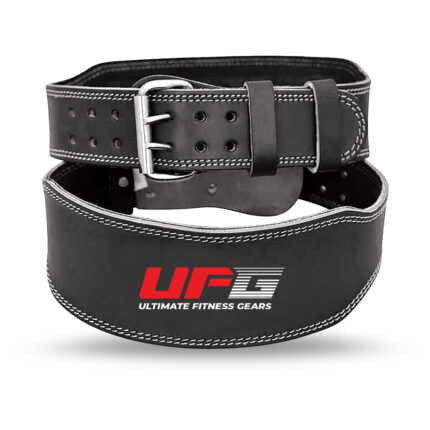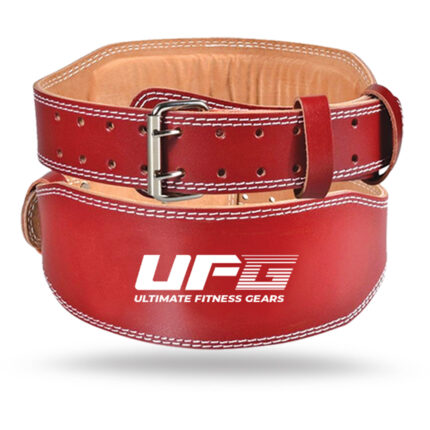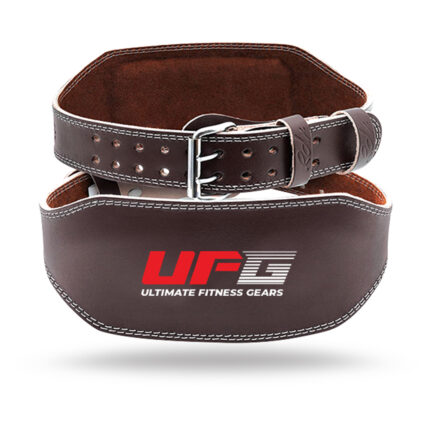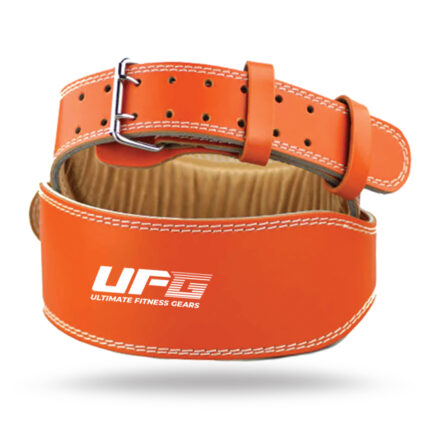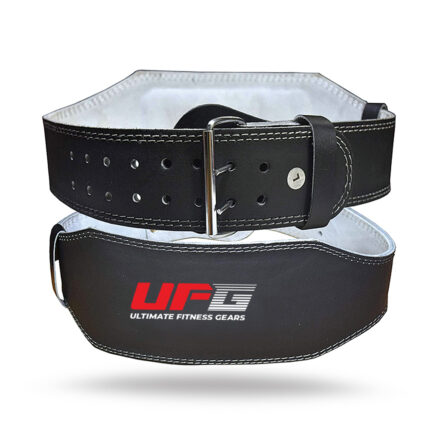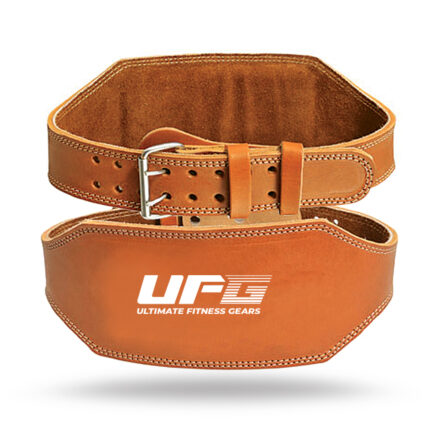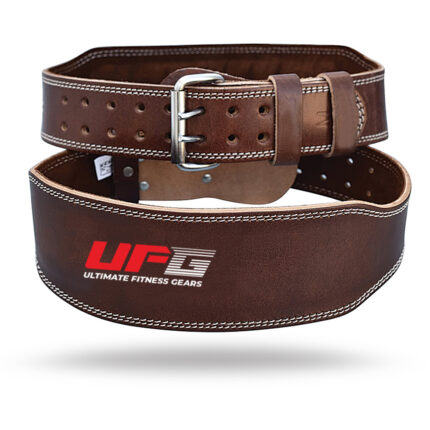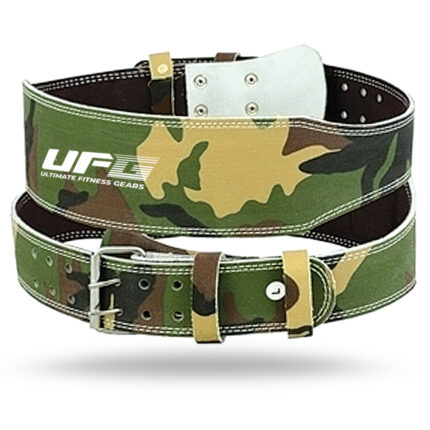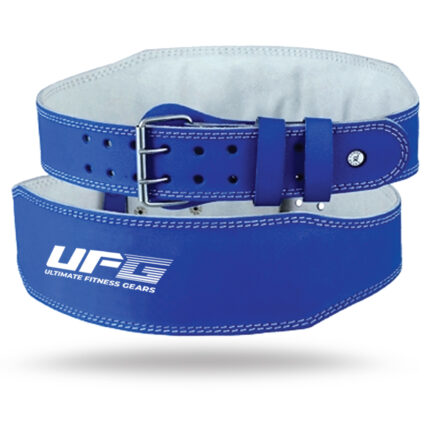Leather Belts
Leather weightlifting belts are supportive accessories worn around the waist during weightlifting exercises, particularly heavy compound movements like squats, deadlifts, and overhead presses. These belts are typically made from high-quality leather, which offers durability, stiffness, and stability to support the lower back and core during lifts.
- Material: Leather weightlifting belts are constructed from genuine leather, often sourced from cowhide or buffalo hide. Leather provides excellent durability and stiffness, ensuring the belt maintains its shape and supportiveness over time.
- Width and Thickness: These belts typically have a uniform width, typically ranging from around 4 to 6 inches. The width provides ample support to the lower back and abdominal muscles during heavy lifting. The thickness of the leather varies but is usually between 10 to 13 millimeters for optimal support and stability.
- Buckle or Closure: Leather weightlifting belts usually feature a sturdy buckle or closure mechanism to secure the belt around the waist. Some belts use a single prong buckle, while others may have a double prong or lever closure system for added security and ease of adjustment.
- Lining: Some leather weightlifting belts may have a suede or synthetic lining on the inside for added comfort and grip against the skin. The lining helps prevent the belt from slipping during heavy lifts and minimizes discomfort from friction.
- Contouring and Tapering: Many leather weightlifting belts are contoured or tapered around the edges to provide a more comfortable fit around the waist and hips. This contouring allows for better mobility and flexibility during lifts while still providing maximum support to the lower back.
- Embossed Logos or Designs: Some leather weightlifting belts feature embossed logos, designs, or branding for aesthetic purposes. These details add a touch of style to the belt without compromising its functionality.
- Break-in Period: Leather weightlifting belts may require a break-in period to soften and conform to the lifter's body shape. During this time, the belt becomes more comfortable to wear while still providing the necessary support and stability.
Leather weightlifting belts are favored by many strength athletes for their durability, stability, and classic appearance. When selecting a leather weightlifting belt, it's essential to choose the right size and thickness to ensure proper fit and support for your individual body type and lifting style. Additionally, proper technique and form should always be prioritized when using a weightlifting belt to maximize its benefits and minimize the risk of injury.


